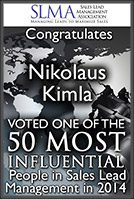Innovation as a Fuel for the Future
Only innovations ensure value creation and value creation, in turn, ensures work and prosperity. If you analyze this development on the microeconomic level, technological change and the related change of business processes play a key role in businesses. They are the driving forces of change and their joint effect triggers further dynamics.
The Internet, for instance, enabled chains of production across the time zones and 24-hour marketplaces that did not exist before. New technologies paved the way for the restructuring of value chains and business processes. This new structural and organizational situation, in turn, imposes new requirements on technological solutions. For instance, faster, bigger and more comprehensive solutions are needed or also ones that are more specialized.
IT as a Driving Force
Information and communication technologies (ICT) are particularly crucial to this trend, because business processes revolve around them. Businesses exist as a type of organization to reduce frictional losses as much as possible and make transactions more concentrated in our economy based on a division of labor. A central accomplishment of ICT is that it reduces coordination and transaction costs.
Technological change and the spread of technology have a key role to play. Back in the 1960s, Gordon Moore predicted that semiconductor performance would double every 18 months with no increase in costs. This prediction, known as Moore’s law, highlights the dynamic speed at which IT develops. Robert Metcalfe posited the theory for a telephone network that the benefits of a network increase with the number of its participants—namely for every already existent user[i]. By extension, a computer operating system is all the more valuable as more people opt for it, because there are all the more additional programs available for it. Every additional participant in a network increases its value, which, in turn, attracts additional users. This thesis vividly explains the success stories in the spread of information technologies such as phone, fax or the Internet.
As transaction costs for businesses decreased and continue decreasing, new more efficient forms of organization, business processes and value chains become possible—provided, of course, businesses always select a medium for their transactions that is the most cost effective and efficient.








Leave a Reply
Want to join the discussion?Feel free to contribute!